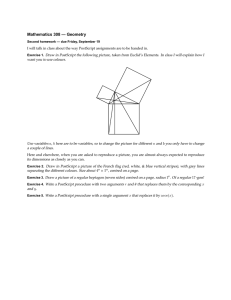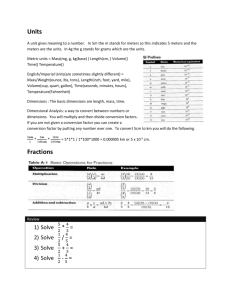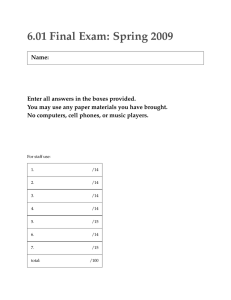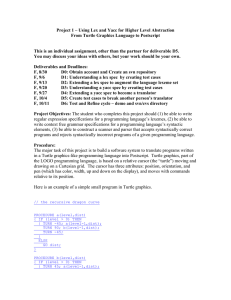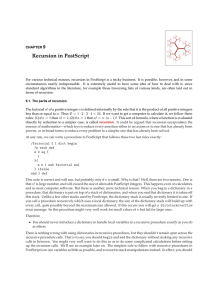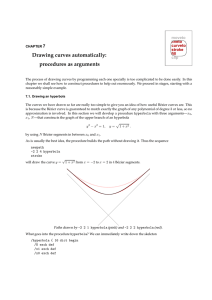Mathematics 308 — Geometry
advertisement
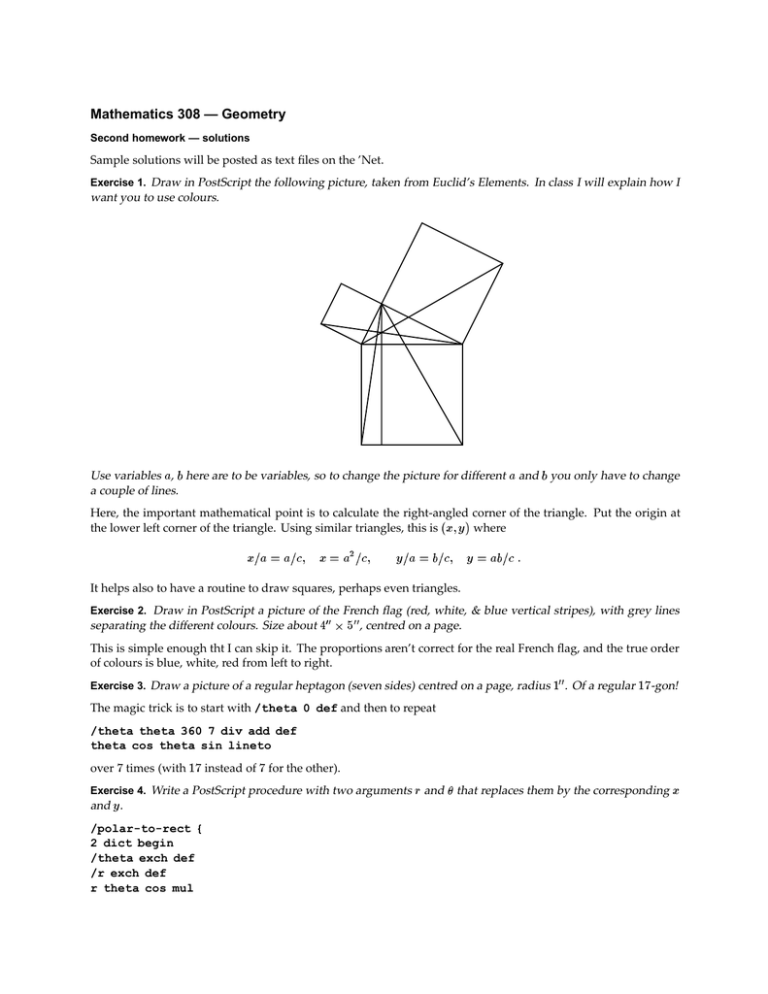
Mathematics 308 — Geometry
Second homework — solutions
Sample solutions will be posted as text files on the ’Net.
Exercise 1. Draw in PostScript the following picture, taken from Euclid’s Elements. In class I will explain how I
want you to use colours.
Use variables a, b here are to be variables, so to change the picture for different a and b you only have to change
a couple of lines.
Here, the important mathematical point is to calculate the right-angled corner of the triangle. Put the origin at
the lower left corner of the triangle. Using similar triangles, this is (x; y ) where
x=a = a=c;
x = a2 =c;
y=a = b=c;
y = ab=c :
It helps also to have a routine to draw squares, perhaps even triangles.
Exercise 2. Draw in PostScript a picture of the French flag (red, white, & blue vertical stripes), with grey lines
separating the different colours. Size about 400 500 , centred on a page.
This is simple enough tht I can skip it. The proportions aren’t correct for the real French flag, and the true order
of colours is blue, white, red from left to right.
Exercise 3. Draw a picture of a regular heptagon (seven sides) centred on a page, radius 100 . Of a regular 17-gon!
The magic trick is to start with /theta 0 def and then to repeat
/theta theta 360 7 div add def
theta cos theta sin lineto
over 7 times (with 17 instead of 7 for the other).
Exercise 4. Write a PostScript procedure with two arguments r and that replaces them by the corresponding x
and y .
/polar-to-rect {
2 dict begin
/theta exch def
/r exch def
r theta cos mul
Second homework solutions
2
r theta sin mul
end
} def
Exercise 5. Write a PostScript procedure with a single argument x that replaces it by acos(x).
p
For this the trick is thatcos,1 x is equal to the polar angle of (x; 1
/acos {
1 dict begin
/x exch def
1 x x mul sub sqrt x atan
end
} def
, x2).

